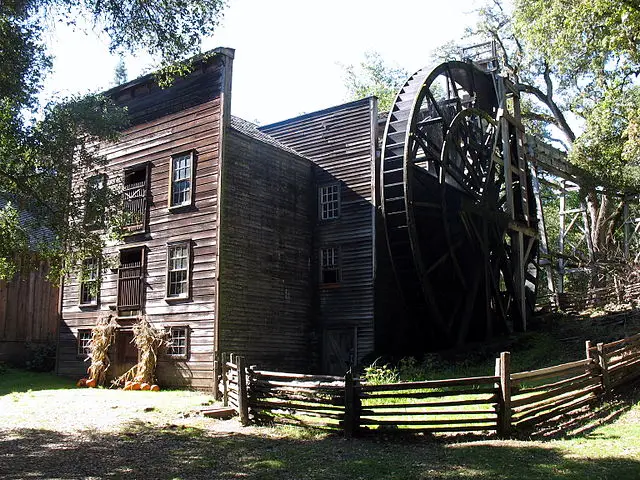Water mills
Watermills were an essential source of power during the colonial period. It was the first standard form of tool which was used to switch a mechanical wheel of a single variety or another.
These water-powered mills also paved the way for displaying the advantages of mechanical power and machinery.
Water was not only a significant source of power during the colonial period, but it was also an essential means of transportation.

More than a hundred years ago, roads in America were used for but never for commercial shipping.
The number of water-powered mills saw an increase before the Civil War, and a significant amount of these mills were still in use until the early 1900s.
The development of mills was also the initial step in freeing agricultural individuals from the drudgery of rural life.
Every small village had to rely on the mills for all their needs. The two most common and essential mills during this period were gristmills and sawmills.
There would also be mills for making mustard, bone meal, axes, barrel saves, tobacco, linseed oil, plaster, flax, salt, and cider.
At present, there is still a water-powered sawmill in the hamlet of New Preston, Connecticut, which operates underwater. This water-powered sawmill features a myriad of saws that were actuated using an innovative turbine.
The small stretch of the waterway, which connects its turbine, is no longer than one mile, but there were once about 30 mills installed on it.
The power needed to run most of these mills came from a massive waterwheel that needed an adequate supply of water to make its revolutions.
More often than not, early settlers built ponds and mill dams to supply water to the wheel at a sufficient velocity.
The water typically enters the mill through a wooden box known as a penstock or flume. This way, the miller can choose to open a water gate from inside the mill to release water into the wheel to run the machinery.
Mills were so important back then that communities often provided inducements like exemptions from military duty, limited monopoly rights, tax exemptions, outright money gifts, adjoining land, and free mill sites to its owners.
It also assisted in attracting wealthy settlers to a town and increasing the value of its area.
Fun and Interesting Facts about Water Mills in the Colonial Period
- President George Washington built his merchant mill in 1771, which is located along with the Mount Vernon lands. An 1803 insurance document revealed that the mill of Washington was 32 feet by 46 feet.
- With a more expanded and efficient mill, George Washington turned crops into cornmeal and flour.
- Many early water mills were enclosed under a roof or inside of the building for the protection of ice and snow in winter.
- American mills were modeled after European mills. However, it stopped looking like European mills when inventor Oliver Evans developed an automatic flour mill.
- A merchant mill in the colonial period used French millstones imported from France.
- These French millstones are often considered the best grindstone material ever found for producing white flour and for grinding wheat.
- America became the largest importer of French millstones during the colonial period.
- The milling process requires significant labor as it could not increase its output unless sufficient human resources are present.
Q & A
When did George Washington build his merchant mill?
George Washington built his merchant mill in 1771.
Who was the biggest importer of French millstones in the colonial period?
America was the biggest importer of French millstones in the colonial period.
Who developed the automatic flour mill?
Oliver Evans invented the automatic flour mill.
What are the two most common mills during this period?
The two most common mills of the colonial period were sawmills and gristmills.
Where are water mills built?
Watermills were hidden inside a building or under the roof to avoid damage caused by snow or ice during the winter.



